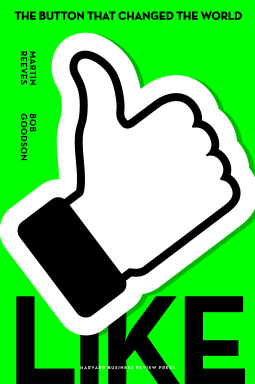
Like
The Button That Changed the World
by Martin Reeves and Bob Goodson
This title was previously available on NetGalley and is now archived.
Send NetGalley books directly to your Kindle or Kindle app
1
To read on a Kindle or Kindle app, please add kindle@netgalley.com as an approved email address to receive files in your Amazon account. Click here for step-by-step instructions.
2
Also find your Kindle email address within your Amazon account, and enter it here.
Pub Date Apr 29 2025 | Archive Date May 02 2025
Talking about this book? Use #Like #NetGalley. More hashtag tips!
Description
A riveting, insider's look at the creation and evolution of the like button, and what it reveals about business, technology, and innovation—and us.
Over seven billion times a day, someone taps a like button.
How could something that came out of nowhere become so ubiquitous and so familiar—and even so addictive? What problem does it solve for people, and why does a "like" feel so good? And by the way, who invented the like button in the first place?
In Like, bestselling author and renowned strategist Martin Reeves and coauthor Bob Goodson—Silicon Valley veteran and participant in the invention of the like button—take readers along on a fascinating quest to find out what's behind the world's friendliest icon. It's a story that starts out as simply as a thumbs-up cartoon but ends up presenting surprises and new mysteries at every turn, some of them as deep as anthropological history and others as speculative as the AI-charged future.
But this isn't just the story of the like button. It's so much more.
Using the origin story and evolution of the like button as a jumping-off point, the authors take readers on a fun and fascinating journey through the world of business, offering smart and surprising insights into technology, innovation, creativity, invention, and even us.
For such a small and unassuming invention to take on such scale and power, it must be tapping into something very, very big.
Available Editions
| EDITION | Hardcover |
| ISBN | 9798892790451 |
| PRICE | $32.00 (USD) |
| PAGES | 272 |
Available on NetGalley
Average rating from 4 members
Readers who liked this book also liked:
John Kotter; Holger Rathgeber
Business, Leadership, Finance, Nonfiction (Adult)













